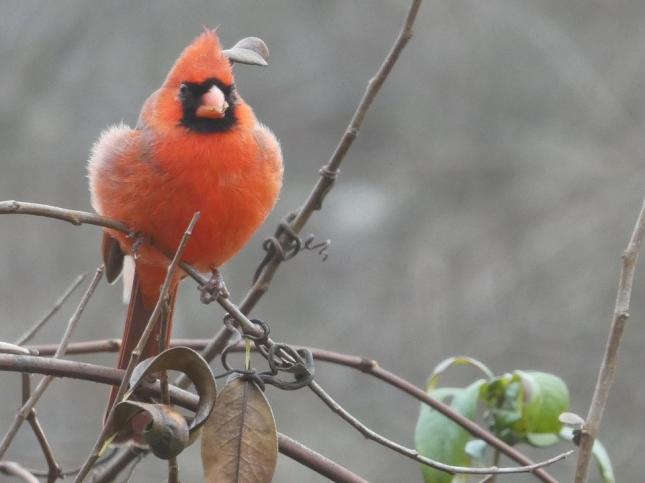All About Cardinals

All About Cardinals
Cardinals, everyone’s favorite bird. They are bright, cheery, and regal. Their name is attributed to the religious officials of the Catholic faith who wear a red robe and scarlet cap. This affiliation also carries over to two of the names for a flock of Cardinals: a conclave or a Vatican. Cardinals are widespread in North America. They naturally range from the Atlantic to the Midwest. From the Canadian border through the Gulf of Mexico. Some have even been introduced to Hawaii.
Cardinals are primarily seed eaters but are known to eat insects also. They prefer foraging on the ground or on a flat surface feeder like a hopper or tray feeder. They are adaptable to all habitats but prefer woods, woods edge, or places of dense foliage in which to nest. In the winter, you see them gather in large flocks. Flocking helps them find food and escape predators such as hawks. In spring, these flocks will disband, and the males will start singing to attract a female. The female is drabber in appearance. You may even witness ‘kissing Cardinals’. By feeding the female, the male is demonstrating his ability as a good provider. With a little help from her mate, the female builds the nest with twigs, grasses, and pine needles. The Cardinals have one to two broods per year and two to five young for each nesting. The female will not use the old nest but instead she builds a new one. Incubation is about two weeks with anywhere from one to two weeks for fledging. The parents will continue to feed the young after they fledge. The young will be a full-size bird with the silhouette of a Cardinal but brown and drab in appearance. It is delightful to watch the parents feeding the young beak to beak. On average, Cardinals are thought to live 3-5 years.
The Cardinals stand out brightly in the winter scenery. With each snowfall, it seems we have many more visiting. At times we can count over twenty male Cardinals perched on the branches and on the feeders. We assume there is a like number of females. I broadcast Safflower seed on the ground each morning and in late afternoon. By spreading the foraging flocks of Cardinals we see many more birds.
Our fondness for Cardinals last beyond our lifetimes and theirs. It is believed that loved ones who have passed on return in the form of a bird. The word for it is metempsychosis; the passage of the soul at death into another body, either a human being or animal. The visit of a Cardinal is considered the embodiment of a departed loved one. A radiant feathered angel to let us know all is well. Not sure how to interpret that as we have upwards of forty Cardinals at our feeders. Are there forty lost friends trying to tell me something? Can’t it wait until I cross over?

